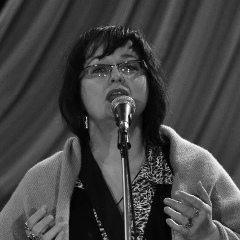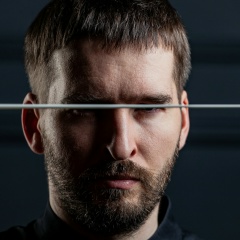rubstein: есть ли жизнь после птср
"Выбраться из тяжелых жизненных обстоятельств - это задача напряжения внимания, перестройки восприятия, мышления и действий. Это, по сути, перестройка нейронных связей на усилии воли. Но на этом внутренняя работа не закончена: нужно выжить после выживания.
Дальше наступает новый этап - перестроиться с образа жизни и мышления "выживальщика" на другой способ жизни - просто жить.
То есть, пережив травму, нужно еще суметь выбраться из посттравмы - флэшбэков и привычек напрягать волю и внимание, постоянной травматической бдительности, сверхчувствительности к возможности новой травмы, повторения прошлого.
Часто бывает, что преодолев первый этап, человек так устает, что на второй уже сил нет.
Многие, выбравшиеся из травматических обстоятельств, остаются на всю жизнь в посттравме, не в состоянии жить в реальности, где пули не свистят. В этой новой реальности для них нет опоры, нет той картины мира, в которой бы они чувствовали себя уместными. И тогда они держатся за посттравму, как за постоянное напоминание, как жить не надо, определяя этим прошлым свои жизненные смыслы, свои приложенные усилия. Но это - прошлые смыслы, и они никак не пригождаются в настоящем, в котором нет страха и беспомощности. Это место большой растерянности, в которой человек учится жить заново, осваивая каждый шаг жизни как ребенок. Бывает очень трудно отпустить посттравму просто потому, что не понятно, ради чего и как жить дальше, если не выживать.
Разница между первым и вторым этапом в том, что в первом основное внимание направлено на изменение действий, а во втором - на изменении своего восприятия. То есть, картины мира. И здесь снова нужна воля, невыносимость травматических последствий, и желание жить лучше."
"Выбраться из тяжелых жизненных обстоятельств - это задача напряжения внимания, перестройки восприятия, мышления и действий. Это, по сути, перестройка нейронных связей на усилии воли. Но на этом внутренняя работа не закончена: нужно выжить после выживания.
Дальше наступает новый этап - перестроиться с образа жизни и мышления "выживальщика" на другой способ жизни - просто жить.
То есть, пережив травму, нужно еще суметь выбраться из посттравмы - флэшбэков и привычек напрягать волю и внимание, постоянной травматической бдительности, сверхчувствительности к возможности новой травмы, повторения прошлого.
Часто бывает, что преодолев первый этап, человек так устает, что на второй уже сил нет.
Многие, выбравшиеся из травматических обстоятельств, остаются на всю жизнь в посттравме, не в состоянии жить в реальности, где пули не свистят. В этой новой реальности для них нет опоры, нет той картины мира, в которой бы они чувствовали себя уместными. И тогда они держатся за посттравму, как за постоянное напоминание, как жить не надо, определяя этим прошлым свои жизненные смыслы, свои приложенные усилия. Но это - прошлые смыслы, и они никак не пригождаются в настоящем, в котором нет страха и беспомощности. Это место большой растерянности, в которой человек учится жить заново, осваивая каждый шаг жизни как ребенок. Бывает очень трудно отпустить посттравму просто потому, что не понятно, ради чего и как жить дальше, если не выживать.
Разница между первым и вторым этапом в том, что в первом основное внимание направлено на изменение действий, а во втором - на изменении своего восприятия. То есть, картины мира. И здесь снова нужна воля, невыносимость травматических последствий, и желание жить лучше."
rubstein: is there life after ptsr
"Getting out of difficult life circumstances is the task of tensioning attention, restructuring perception, thinking and actions. This is, in fact, rebuilding neural connections on the basis of willpower. But this is not the end of the inner work: you need to survive after survival.
Then a new stage begins - to reorganize from the lifestyle and thinking of a "survivor" to a different way of life - just to live.
That is, having survived the trauma, you still need to be able to get out of post-trauma - flashbacks and habits of straining will and attention, constant traumatic vigilance, hypersensitivity to the possibility of a new trauma, a repetition of the past.
It often happens that after overcoming the first stage, a person gets so tired that he has no strength for the second.
Many who have got out of traumatic circumstances remain in post-trauma for the rest of their lives, unable to live in a reality where bullets do not whistle. In this new reality there is no support for them, there is no picture of the world in which they would feel appropriate. And then they cling to post-trauma, as a constant reminder of how not to live, defining their life meanings, their efforts by this past. But these are past meanings, and they are of no use in the present, in which there is no fear and helplessness. This is a place of great confusion, in which a person learns to live anew, mastering every step of life like a child. It can be very difficult to let go of post-trauma simply because it is not clear why and how to live on, if not survive.
The difference between the first and second stages is that in the first, the focus is on changing actions, and in the second, on changing your perception. That is, a picture of the world. And here again you need will, the intolerance of traumatic consequences, and the desire to live better. "
"Getting out of difficult life circumstances is the task of tensioning attention, restructuring perception, thinking and actions. This is, in fact, rebuilding neural connections on the basis of willpower. But this is not the end of the inner work: you need to survive after survival.
Then a new stage begins - to reorganize from the lifestyle and thinking of a "survivor" to a different way of life - just to live.
That is, having survived the trauma, you still need to be able to get out of post-trauma - flashbacks and habits of straining will and attention, constant traumatic vigilance, hypersensitivity to the possibility of a new trauma, a repetition of the past.
It often happens that after overcoming the first stage, a person gets so tired that he has no strength for the second.
Many who have got out of traumatic circumstances remain in post-trauma for the rest of their lives, unable to live in a reality where bullets do not whistle. In this new reality there is no support for them, there is no picture of the world in which they would feel appropriate. And then they cling to post-trauma, as a constant reminder of how not to live, defining their life meanings, their efforts by this past. But these are past meanings, and they are of no use in the present, in which there is no fear and helplessness. This is a place of great confusion, in which a person learns to live anew, mastering every step of life like a child. It can be very difficult to let go of post-trauma simply because it is not clear why and how to live on, if not survive.
The difference between the first and second stages is that in the first, the focus is on changing actions, and in the second, on changing your perception. That is, a picture of the world. And here again you need will, the intolerance of traumatic consequences, and the desire to live better. "
У записи 12 лайков,
2 репостов.
2 репостов.
Эту запись оставил(а) на своей стене Lazy Cat































